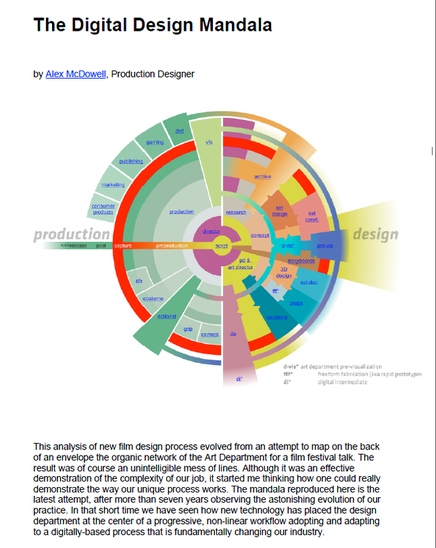"I think that it's important now for people coming into the entertainrnent or pop culture business to know that all bets are off,
[1] ALEX McDOWELL , Alex McDowell, production designer of "Charlie and the Chocolate Factory" (2005) and "The Corpse Bride" (2005), has two views of the future. He could just lock himself up in a room and dream things up for the screen. Or he could sit down with experts working on actual new technologies. Add a dose of imagination, and he will have a fantasy of the future with believabilily. That was McDowell's approach when helping to create the look of the year 2054 for Steven Spielberg's sci-fi saga "Minority Report" released in 2002. And it's his approach this day as he studies the undulating lines projected on a screen in the MIT Media Lab, where McDowell is a visiting artist.
|
AuthorMilad Doueihi Archives
Maggio 2014
Categories
Tutti
|
||||||||||||||||||||||

 Feed RSS
Feed RSS
